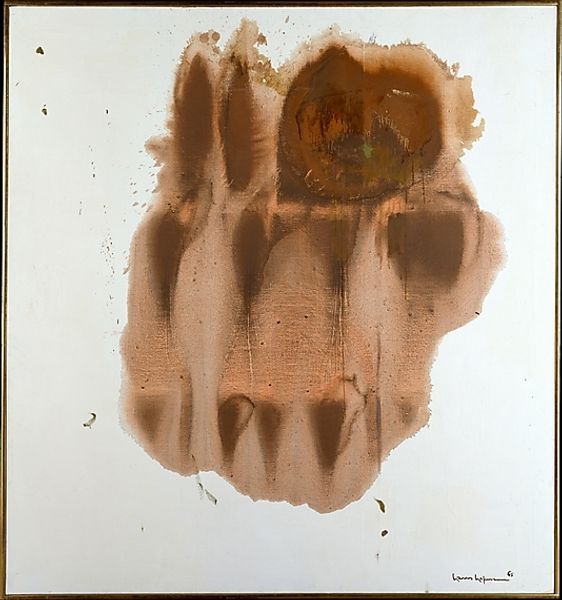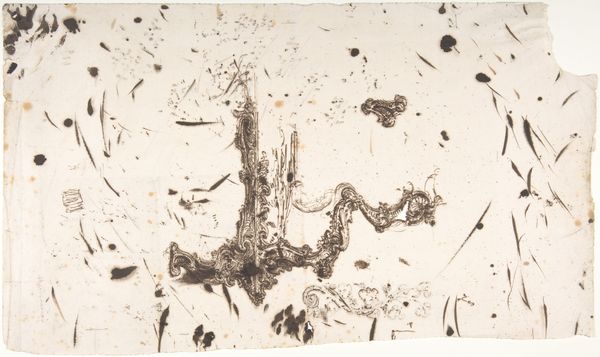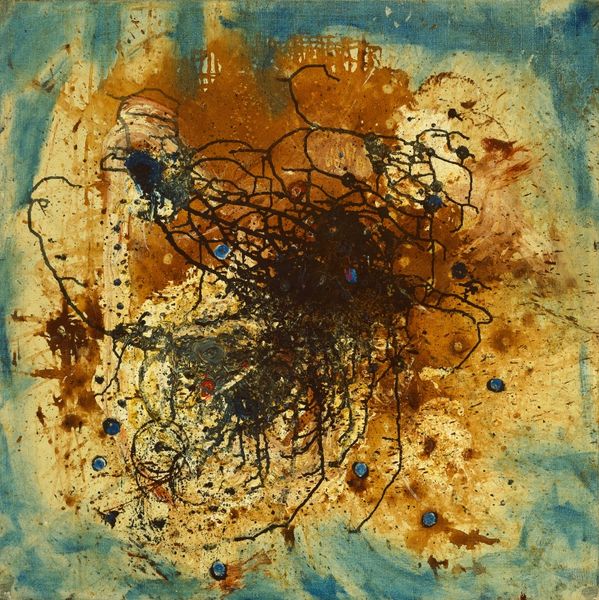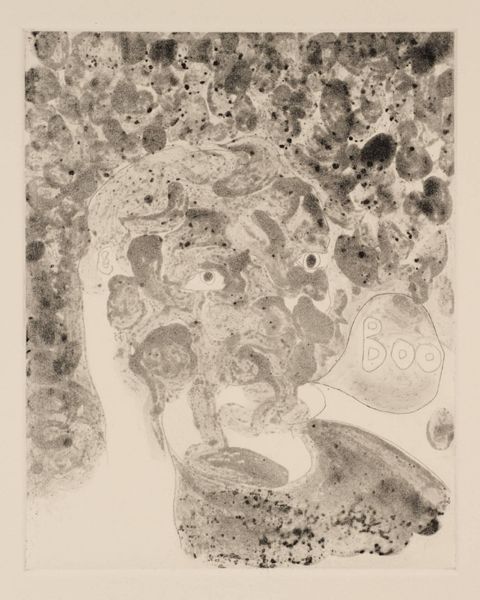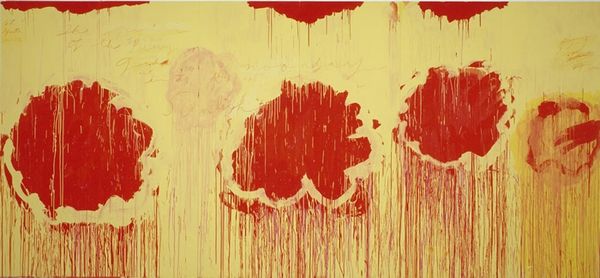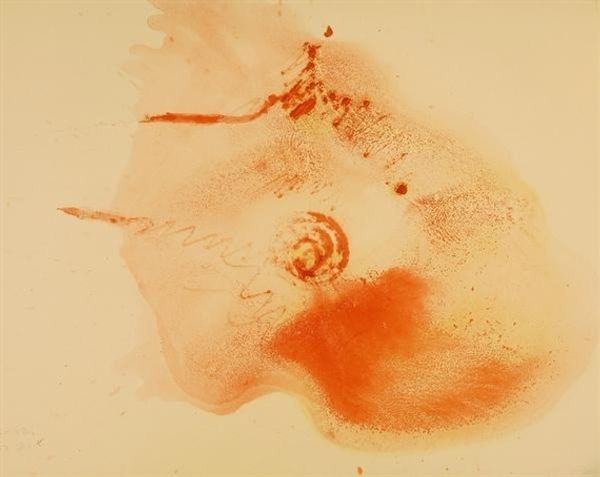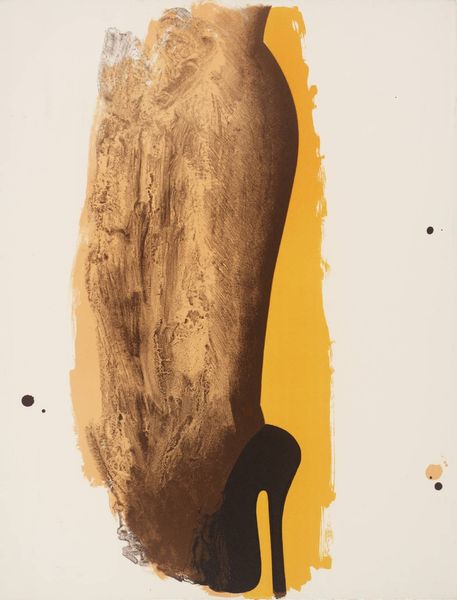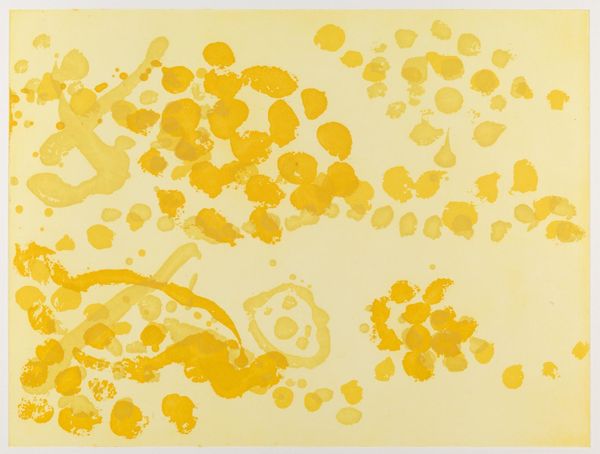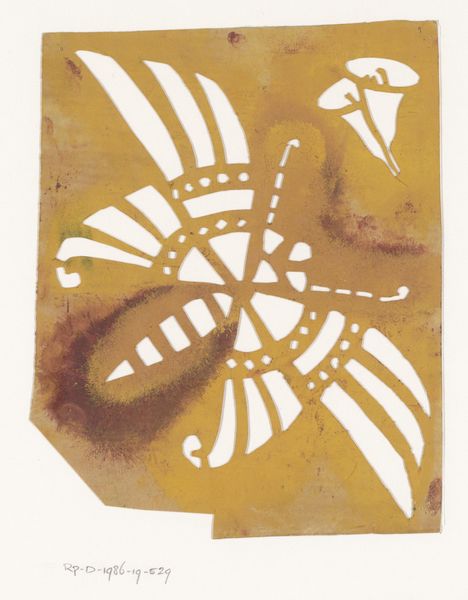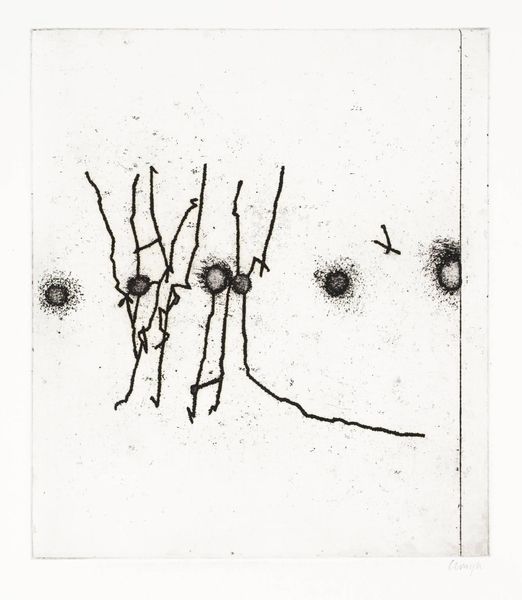
Copyright: Antoni Tapies,Fair Use
Editor: So, this is Antoni Tapies' "Head and Varnish," made in 1990 with mixed media. The unusual use of varnish really strikes me; it feels almost like looking through a dirty window. What do you see in this piece? Curator: The title suggests a relationship between representation and process. It prompts questions about how "head" as an image, as a concept, is treated –almost obscured– by the very materials meant to preserve or reveal it. The cultural value we assign to portraits, especially within the Western art tradition, is turned on its head here, isn’t it? What is emphasized instead is the materiality, the sheer physicality of the varnish. Editor: I see that. It's like Tapies is drawing attention to the artifice, to the "made-ness" of the artwork, rather than trying to create an illusion. Does the application of varnish hide a symbol or specific meaning to you? Curator: Perhaps not a specific symbol in the traditional sense, but it does obscure the ground. What is often taken as a neutral background in painting. This gesture directs us to consider what is and isn’t typically valued within painting. In this work, the "head" seems embedded in a ground. Editor: Like we are excavating the varnish to search the mind, digging for the subject matter buried in these paintings. That is unexpected for such a minimal abstraction. Curator: Precisely. Tapies, in works like these, critically examines how art objects attain meaning within the museum context and broader cultural discourse. This invites us to question not just what we see, but how we see, and why. Editor: That definitely gives me a different perspective. Thanks for pointing out how the socio-political factors help the reception of the artwork, rather than what is necessarily visually apparent.
Comments
No comments
Be the first to comment and join the conversation on the ultimate creative platform.
